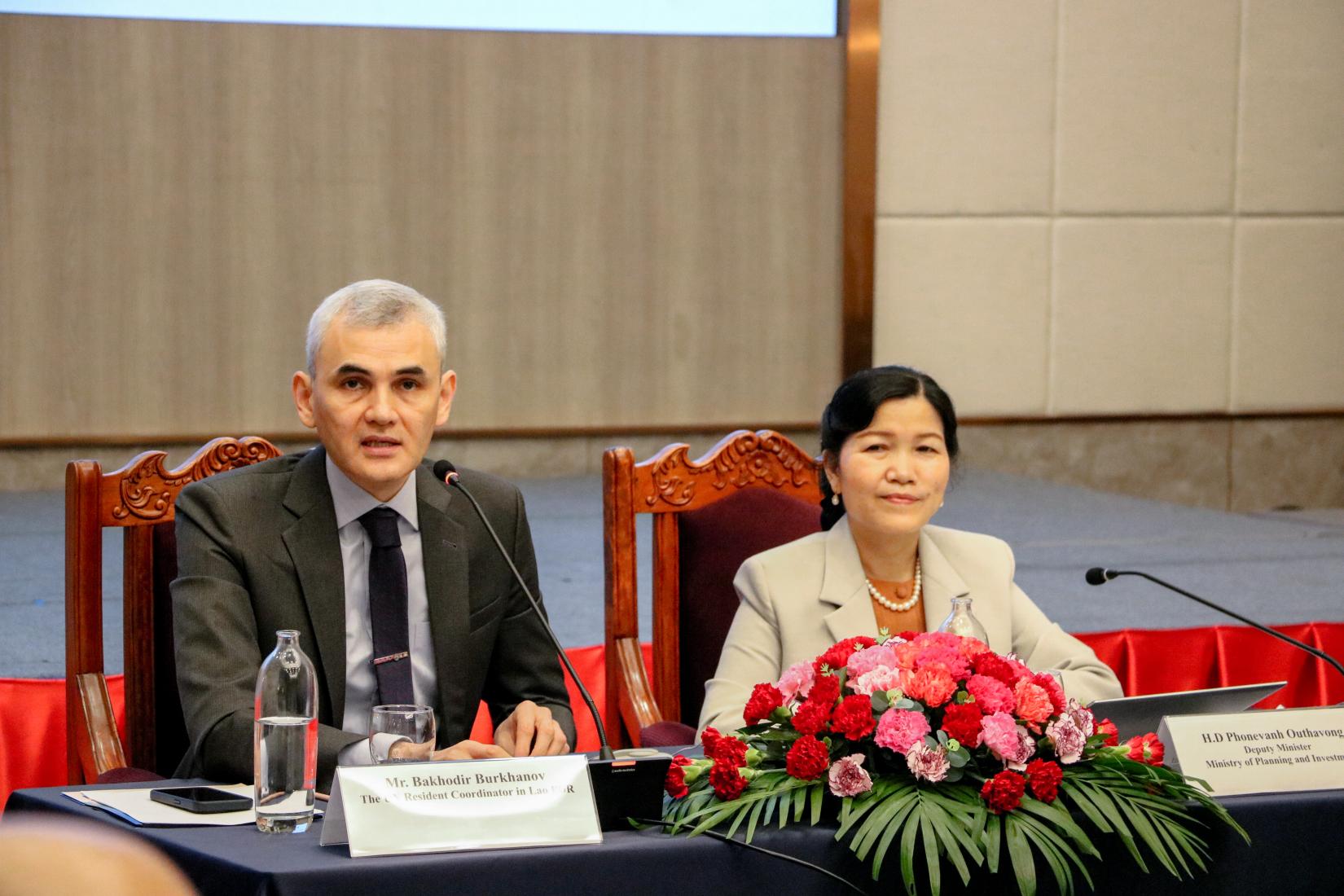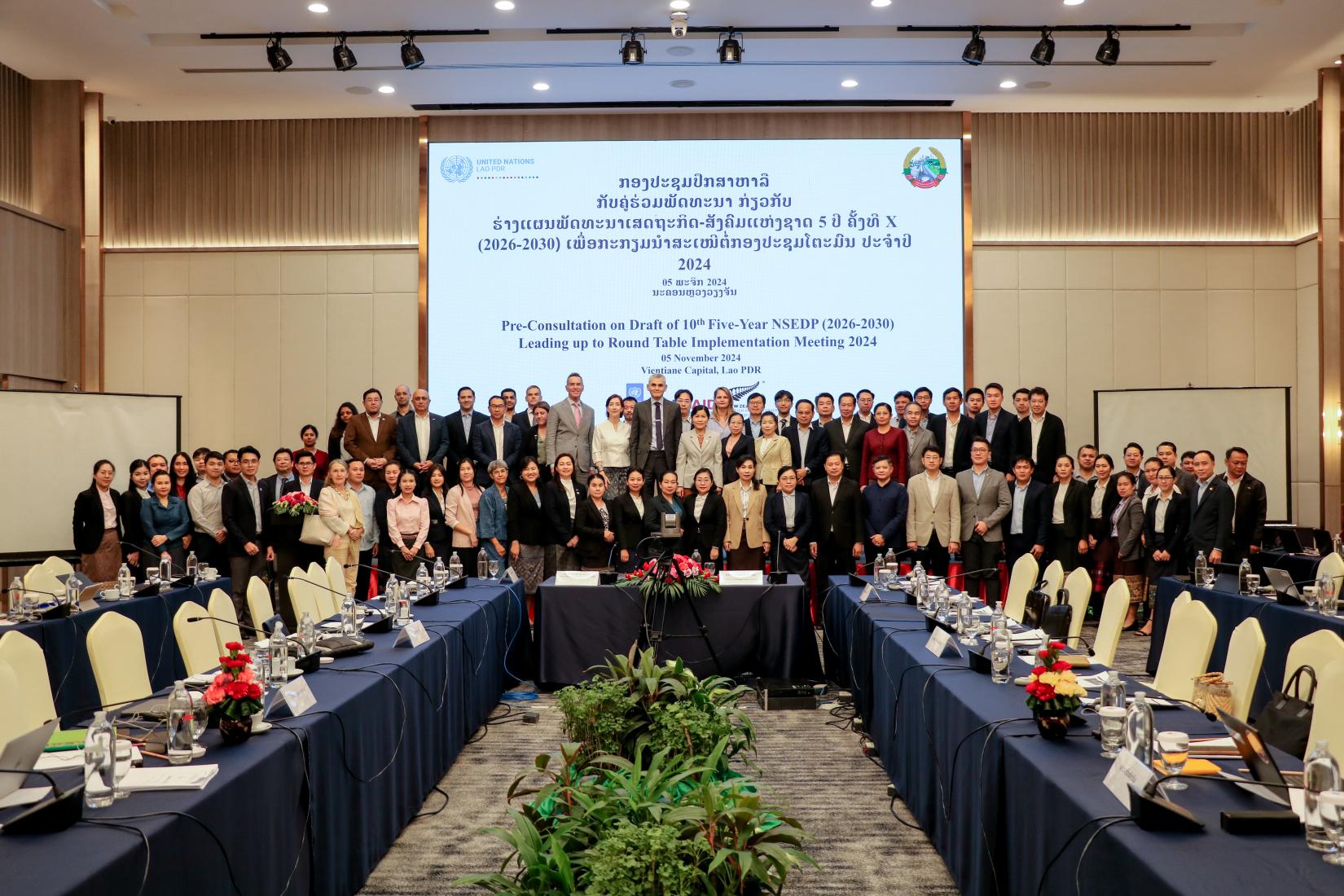RTIM Pre-Consultation Meeting on the 10th NSEDP
Remarks by Bakhodir Burkhanov, UN Resident Coordinator

Excellency Mme. Phonevanh Outhavong, Vice-Minister of Planning and Investment
Excellencies Ambassadors
Distinguished Government representatives
Development partner representatives
Colleagues, ladies and gentlemen –
It is my pleasure to join Vice-Minister in welcoming you all to this important consultation ahead of the Round Table Implementation Meeting coming up next week.
Recognizing that time available during Round Table Meetings themselves is always limited, our aim today is to create dedicated space for a detailed, substantive discussion on the draft NSEDP given its importance for all of us for the coming years.
We appreciate you taking the time to join, especially as we move towards the busy end-of-year processes.
National Socio-Economic Development Plans invariably offer a roadmap for the country’s efforts towards well-being and prosperity of citizens. But this 10th Plan comes at an especially important moment.
The five years from 2026 will take us to the 2030 deadline for the Sustainable Development Goals – the global blueprint for the world we want to build that all UN Member States pledged to in 2015, and re-committed to at the Summit of the Future earlier this year.
As was articulated in the Voluntary National Review presented earlier this year, despite all the efforts to-date, in Lao PDR, as across the region and indeed around the world, progress towards the achievement of the SDG's is far off-track.
And it is within the five years of the 10th Plan that we will either succeed or fail in finding ways to accelerate progress and close that gap.
On top of this, the 10th NSEDP is also expected to see the achievement the long-held national aspiration of Lao PDR to graduate from the Least Developed Countries status, with all of the credit and careful management that it deserves.
We also know that in the coming years Lao PDR will go through a never-to-be-repeated demographic transition.
With the right policies and investments in human capital, this transition can be transformed into a demographic dividend that can accelerate our progress in the mold of the most successful development stories from this region.
But without those investments, that opportunity of a boost could be missed permanently.
There is more at stake still. The world is seeing record temperatures, and we are reaching a “moment of truth” in our battle to curb devastating impacts of climate change. This battle will be won or lost in this decade.
We see the consequences of more frequent and severe extreme weather events here in Lao PDR with the unprecedented damage and destruction wrought by Typhoon Yagi, and around the world – for example with the devastating flash flooding in Spain in just these past days.
Without global and local action to change the path we are on, we can only expect things to get worse.
Lao PDR is actively engaging in international discussions on these issues, for example with a senior delegation departing for COP29 in Baku imminently.
We need the 10th Plan to set out concrete steps and targets to ensure that adaptation and mitigation measures, considerations of environmental sustainability and resilience, are reflected in all our actions.
Lao PDR has long committed to efforts to ensure that no one is left behind from development progress. This is a fundamental commitment under the 2030 agenda, and essential for how we can judge the success of our efforts.
Determined action within the coming years is key, including taking steps to ensure that development is inclusive and creates opportunities for all Lao people, and that safety nets are strengthened to protect the most vulnerable among us.
And, again, it is the NSEDP that will set out the masterplan for how we can work towards this.
To achieve all of these expectations and aspirations, we must also acknowledge that the 10th Plan is being designed, and will need to be implemented, whilst the country continues to grapple with serious economic and financial difficulties.
This has important consequences for people’s material well-being, and for the resources we have available to make critical investments across all priorities.
The reality is that, as things stand, we have not been able to generate and dedicate sufficient resources for top national priorities set out in the NSEDP. Addressing these difficulties head-on and putting in place steps to build firm economic foundations for the future are therefore of first-order importance.
This is therefore not a business-as-usual Plan. On the contrary, this next five-year Plan will require much vision and grit on the part of policymakers and all of us involved in the process.
As was made clear in the review of progress under the current 9th NSEDP, ensuring that the Plan sets clear, measurable and achievable steps is key to its success. Prioritization will be crucial as ambitions should be backed by means.
And the results framework, and the clarity and focus of the Plan’s targets and goals, are central to how effectively we will be able to translate it into action.
Ladies and gentlemen –
Developing the 10th NSEDP is a huge undertaking, and I take this opportunity to congratulate MPI already bringing things this far.
With the English translation of the second draft now running over 140 pages, there is a huge volume of material to process and a very broad range of issues covered.
Within the limited time that we have available today, we would like to call on all participants to share feedback that is as strategic and practical as possible.
This will help MPI with the daunting task of updating, refining, and ultimately finalizing the next national planning framework.
Before ending, I would like to again thank MPI for gathering us all here today and for the collaborative approach it has taken to developing this important strategic document.
I also express our appreciation to UNDP for technical support to the process, made possible with the support of USAID and New Zealand.
Thank you.


















